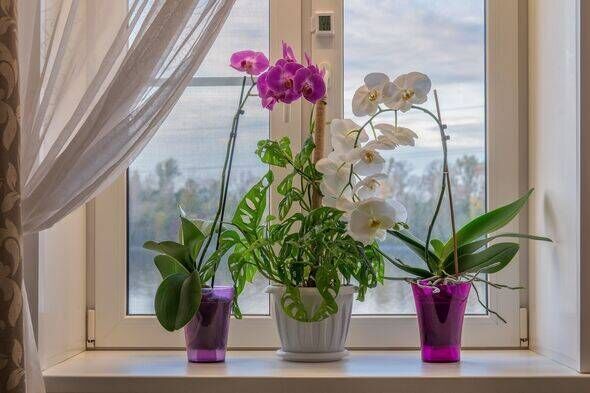Lifestyle
Simple Thermostat Adjustments Can Save Your Houseplants This Winter

As temperatures drop and autumn settles in, many homeowners will notice their indoor plants struggling to adapt to the environmental changes. According to plant expert Ollie Burgess, numerous plant enthusiasts face a common dilemma: as heating systems become active, formerly vibrant ferns, palms, and monsteras begin to wilt. This seasonal shift often leads to frustration, as plant lovers mistakenly attribute their plants’ decline to poor care.
Burgess explains, “People often blame themselves for being a ‘bad plant parent’, but the truth is most plants are reacting to sudden environmental changes in your home. Houseplants don’t like surprises.” The commencement of the heating season can create adverse conditions for indoor plants, as the air dries out, temperatures fluctuate, and draughts emerge.
The heating process significantly alters the microclimate within homes. Adam Knight, Lead Engineer at the home heating and cooling company BOXT, emphasizes that it’s not just the heat itself but how it moves around a space that can lead to stress for plants. “Hot air rising from radiators or sudden cold from windows can create microclimate stress points,” he notes.
Understanding the Impact of Heating on Houseplants
When heating systems activate, three main changes occur that can jeopardize houseplant health. First, humidity levels drop. Warm air, while cozy for humans, can hold more moisture than cold air. Without additional humidity, indoor conditions can become excessively dry. Many houseplants, particularly tropical species like ferns and monstera, thrive in humidity levels above 40%. During winter, these levels can plummet below 30%.
Burgess points out that “brown tips are often the first sign that your plants are struggling with dry air.” Common symptoms of low humidity include curling leaves and wilting. Knight adds, “Central heating dries the air faster than many realize. Keeping an eye on moisture levels to balance temperature and humidity can help both your plants and your home feel healthier.”
Plants placed near windows may be exposed to drafts at night and warm air during the day. This constant environmental fluctuation can induce stress in both leaves and root networks. Burgess likens a plant’s health to a barometer for home conditions, stating, “If your monstera is browning or your fern is curling, that’s a red flag that the air is too dry for you as well.”
Practical Tips for Plant Care During Heating Season
Incorrect placement of plants is another critical factor affecting their health. Radiators and sunny windowsills located above heating sources can harm delicate foliage. A straightforward rule for positioning plants is to ensure they are at least 50 cm to 1 m away from radiators. Grouping plants can help them create a mini-environment that retains moisture.
For an added boost, placing a dish of water with stones under plant containers can increase humidity around the plants as the water evaporates. Maintaining a consistent environment is essential for plant survival during heating season. Burgess warns that “the biggest mistake I see is running the heating on a high, fluctuating schedule.” Even temperature swings from 16°C at night to 25°C during the day can stress plants, leading to browning leaves and drooping.
Knight agrees, stressing the importance of keeping temperature changes within a range of 3-4°C. For example, a comfortable 21°C when active at home and no lower than 17-18°C overnight can ensure a balanced environment without significantly increasing heating bills.
While central heating reduces moisture in the air, closed windows and doors can trap humidity from daily activities like cooking and bathing. Knight suggests aiming for humidity levels of 50% to 55% in summer and 45% to 50% during a typical winter. Regular ventilation and the use of a budget-friendly hygrometer, available for as little as £3, can help monitor these levels.
Overwatering is another common concern, particularly in winter when soil dries more slowly. Burgess advises checking moisture levels with your finger before watering, as overwatering cold soil can lead to root rot. Rotating plants while watering ensures all sides receive even light exposure, promoting healthy growth.
For those seeking low-maintenance options, Burgess recommends hardy varieties like the Snake Plant, ZZ Plant, and Pothos, which thrive in dry, heated environments. Other suitable choices include Dracaena and Philodendron, known for their air-cleaning abilities, as well as the Peace Lily, which flourishes in consistent warmth.
Kitchens and bathrooms, naturally retaining more humidity, are ideal locations for moisture-loving plants like ferns. Conversely, living rooms with limited drafts are suitable for more resilient varieties like succulents. For spaces with changing light conditions, versatile options such as jade plants or cast iron plants are recommended.
Research indicates that houseplants can enhance indoor air quality by increasing humidity through transpiration, which alleviates dry skin and irritated eyes. Burgess encourages homeowners to consider their plants as housemates, stating, “They need stable conditions to be happy—just like we do.”
With thoughtful adjustments to heating systems and careful placement of plants, keeping indoor greenery healthy throughout winter becomes manageable. As Burgess concludes, “If they start showing stress, it might be a sign your heating isn’t quite right.”
-

 Business5 days ago
Business5 days agoRoyal Bank of Canada Upgrades Ovintiv to Outperform Rating
-

 Entertainment6 days ago
Entertainment6 days agoSylvester Stallone’s ‘Alarum’ Surges in Streaming Despite Poor Reviews
-

 Sports6 days ago
Sports6 days agoSaquon Barkley Reflects on James Franklin’s Dismissal from Penn State
-

 Health6 days ago
Health6 days agoFDA Announces First Nine Recipients of National Priority Vouchers
-

 Science6 days ago
Science6 days agoMIT Develops 3D Brain Models from Patient Cells for Custom Therapies
-

 Entertainment6 days ago
Entertainment6 days agoOlivia Nuzzi’s Memoir Set to Uncover RFK Jr.’s Controversial Texts
-

 World6 days ago
World6 days agoHamas to Return Remains of Additional Hostage on Friday
-

 Politics5 days ago
Politics5 days agoLB Pharmaceuticals Quiet Period Ends October 21, Analysts Weigh In
-

 Lifestyle4 days ago
Lifestyle4 days agoHistorian Seeks Help to Uncover Cherry Street’s Past
-

 Science3 days ago
Science3 days agoYale School of the Environment Launches Accelerated Master’s Programs
-

 World5 days ago
World5 days agoExposing the Reality Behind Guatemala’s Garment Industry
-

 Lifestyle6 days ago
Lifestyle6 days agoSouth Los Angeles Intersection Renamed to Honor Activist Danny Bakewell Sr.








